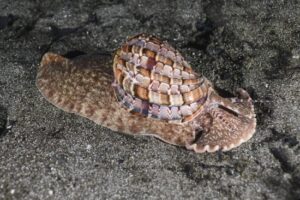The importance of corals and coral reefs for life on our planet is well-known, that’s why it’s not surprising that the health of coral reefs is monitored all over the world, but what are we actually doing apart from monitoring them, and is it enough? In order to understand the importance of this issue, we need to know a few more details…
Coral reefs are often called “rainforests of the sea”, and the part they play in maintaining the atmosphere is very big. They are also home to the most living creatures on the planet per square meter.
Corals have an internal skeleton made of calcium carbonate, or limestone, which is characteristically white. They live in symbiosis with algae from the Zooxnantelae group, providing the algae with a safe “home” within their colony. The algae, in return, gives them part of the energy they absorb through photosynthesis, also giving the corals their bright colors. If corals are pale, it means that they lack this algae.
In order to live and grow, corals must be on a stable surface.
Why are coral reefs important?
In addition to the already mentioned role of maintaining the atmosphere, coral reefs also create underwater barriers. They protect shores from the erosive influence of the waves. Without them, a whole series of archipelagos would simply be swept away by the destructive force of the waves. You’ve probably already heard this, but let’s remind you that coral reefs are home to 25% of all living things in the oceans!
What exactly is “coral bleaching”?
We previously mentioned that Zooxanthellae algae is responsible for the color of corals. If they experience some kind of stress (for example an increase in water temperature) the corals expel this algae and start to fade. If coral is pale, it does not mean that it is dead, and it is possible that it will recover, however, if the stress continues, it will die. The first global “bleaching” of corals was recorded back in 1998 when 16% of corals died. The next time this happened was in 2015-2016 when climate phenomenon ‘El Niño’ led to an increase in sea temperatures in the central and east-central equatorial Pacific. The third wave of coral bleaching continues today, even though the El Niño phenomenon has passed.
What to do?
People realized a long time ago that corals can be grown in controlled conditions. Some of them grow very slowly (about 2 cm per year) and others relatively fast (up to 10 cm per year). Plantations for growing corals have begun to spring up as well as the idea of planting them on reefs. It is a long-term process but it gives results, especially if planting experts choose a species that is more resistant to temperature stress.
We recently stayed in the Maldives, at the Amaya Kuda Rah Resort located in the South Ari Atoll. When we dived on the house reef, we found that it was in a fairly good condition, albeit with noticeable traces of wave action in some parts. There was plenty of wildlife, from colourful coral fish to reef sharks, and we also saw a whale shark gliding elegantly through the blue at one point. In shallow water, at a depth of ten meters, we noticed regular hexagonal shapes. It was clear that they were not natural formations but man-made. We realized what they were a few days later when the resort organized coral planting activities.
“Every year we organize coral planting. We have noticed that they fit in very well with our House Reef and fill it out. Corals grow steadily on the structure and quickly cover it completely” says Asanka Fernando, the General Manager of the resort.
It is interesting that guests can also join in with coral planting following a short training session. This kind of initiative is very well received and people have the feeling they are doing something good.
Initially the man-made creations stand out in the underwater environment, but they quickly fit in, and the underwater inhabitants accept them.
The fact that similar actions are being organized all over the world, wherever corals can be found, is encouraging. Over the past few years, human efforts to restore the world’s coral reefs and signs of progress have begun to appear. We just have to persevere and hope that we are not too late.
Article and photos by Janez Kranjc and Ivana Orlovic Kranjc
Discover more about the Amaya Kuda Rah Resort here.
The post Planting Corals appeared first on Mares – Scuba Diving Blog.
Read MoreDiving, climate change, coral, coral bleaching, coral planting, coral reef, global warming, Indian Ocean, maldives, marine lifeMares – Scuba Diving Blog


